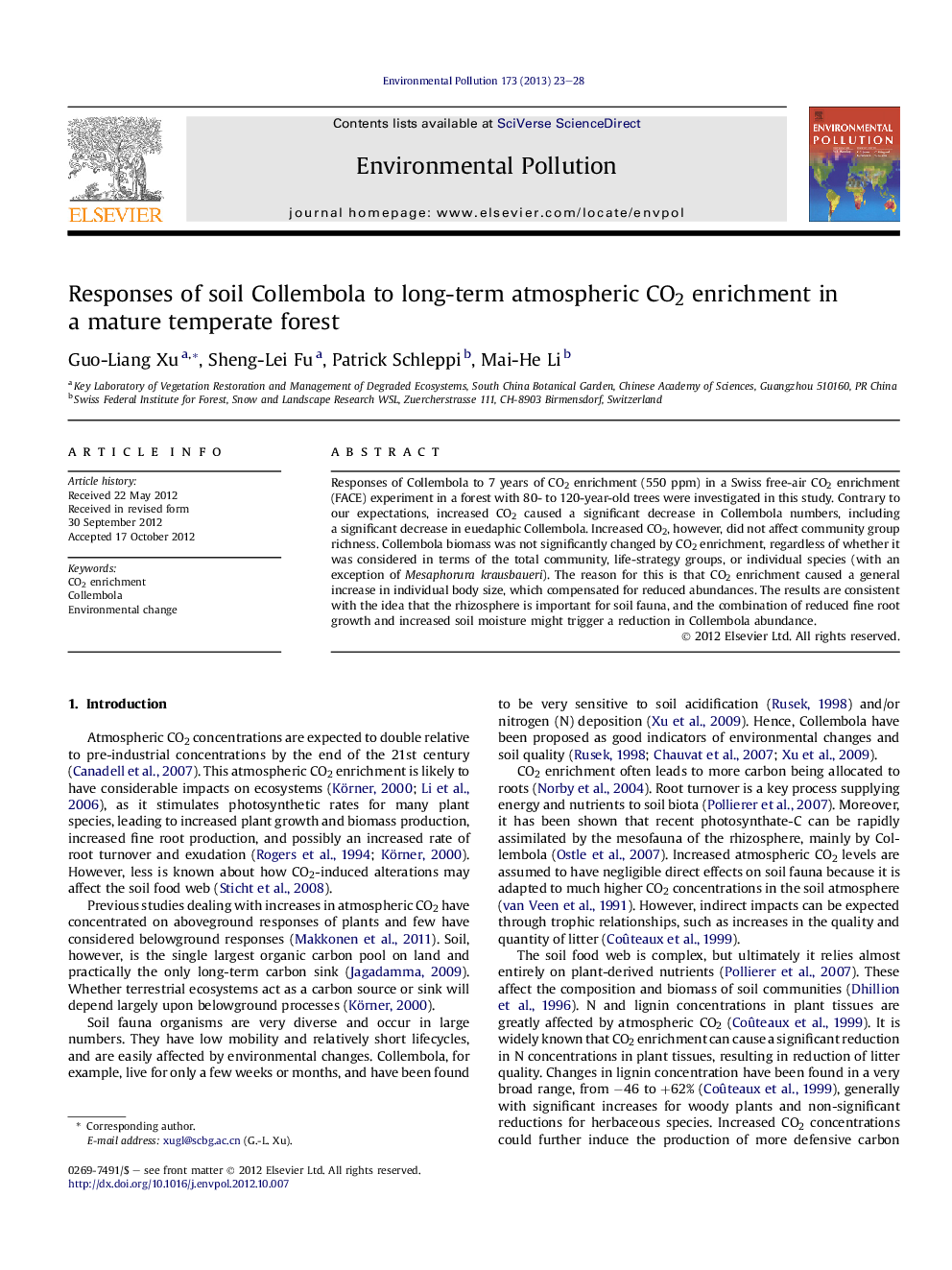| Article ID | Journal | Published Year | Pages | File Type |
|---|---|---|---|---|
| 4424467 | Environmental Pollution | 2013 | 6 Pages |
Responses of Collembola to 7 years of CO2 enrichment (550 ppm) in a Swiss free-air CO2 enrichment (FACE) experiment in a forest with 80- to 120-year-old trees were investigated in this study. Contrary to our expectations, increased CO2 caused a significant decrease in Collembola numbers, including a significant decrease in euedaphic Collembola. Increased CO2, however, did not affect community group richness. Collembola biomass was not significantly changed by CO2 enrichment, regardless of whether it was considered in terms of the total community, life-strategy groups, or individual species (with an exception of Mesaphorura krausbaueri). The reason for this is that CO2 enrichment caused a general increase in individual body size, which compensated for reduced abundances. The results are consistent with the idea that the rhizosphere is important for soil fauna, and the combination of reduced fine root growth and increased soil moisture might trigger a reduction in Collembola abundance.
► Increased CO2 caused a significant decrease in Collembola abundance. ► Increased CO2 caused a significant decrease in euedaphic Collembola. ► Collembola body size tended to be larger. ► A decrease in fine roots biomass might trigger the reduction in Collembola.
